The automotive market is bustling with options, making it essential for consumers to consider their needs and tastes when selecting a new vehicle. The Fiat 600 and the VW Polo are two compelling choices in the compact segment, each bringing its unique offerings to the table. In this article, we will dive deep into a comparison of these two vehicles, focusing on their technical aspects and innovations.
Fiat 600 vs VW Polo – Which car suits you better?
Both models have their strengths – but which one suits you more?
Compare performance, efficiency, price and space directly: Fiat 600 or VW Polo?
Design and Body Type
The Fiat 600 stands out as a stylish SUV, embodying a modern design that appeals to urban dwellers and adventure enthusiasts alike. Its dimensions, measuring 4178 mm in length, 1779 mm in width, and 1525 mm in height, provide ample room for passengers and cargo, with a trunk capacity of 385 liters.
On the other hand, the VW Polo embraces the traditional hatchback format. With a slightly smaller footprint at 4074 mm long, 1751 mm wide, and 1451 mm high, it delivers a compact feel while also offering a flexible 351-liter trunk space. These options make the Polo an excellent choice for city driving and light family use.
Engine Power and Performance
Under the hood, the Fiat 600 boasts a versatile offering with petrol MHEV and electric options. The petrol engines provide a range of power outputs: 100, 136, or 156 HP, combined with front-wheel drive and a dual-clutch automatic transmission system. The electric version doesn’t just offer zero emissions; it also provides an impressive range of 409 km thanks to its 51 kWh battery capacity.
In contrast, the VW Polo is primarily powered by traditional petrol engines, featuring configurations that deliver between 80 to 207 HP. The more powerful variants can accelerate from 0-100 km/h in just 6.5 seconds, showcasing impressive performance for an everyday hatchback. The Polo also features both manual and automatic transmission options, catering to a wider audience.
Fuel Efficiency
Fuel efficiency is an increasingly important aspect for today’s drivers. The Fiat 600 excels in this regard, with a consumption rate of just 4.8 L/100 km for its petrol engines, while the electric version operates at 15.1 kWh/100 km. This positions the Fiat 600 as an economical option for those who want to reduce their carbon footprint.
The VW Polo, however, offers reasonable fuel consumption ranging from 5.2 to 6.5 L/100 km, depending on the chosen engine. While not as efficient as the Fiat, the Polo's various engine options allow buyers to select a balance of performance and efficiency that suits their needs.
Driving Dynamics and Comfort
Both vehicles are front-wheel-drive, which contributes to their easy maneuverability and handling. The Fiat 600's curb weight of 1355 kg enhances driving dynamics, making it feel nimble around corners while providing a smooth ride. The interior layout is designed for comfort, accommodating up to five passengers with ample legroom.
The VW Polo, with a curb weight ranging up to 1372 kg, maintains a poised demeanor on the road. It is well-known for its engaging driving experience, with precise steering and solid suspension. Additionally, the Polo’s cabin is engineered for comfort and quality, featuring top-notch materials and the latest technology, providing a premium feel.
Safety and Innovations
In terms of safety, both the Fiat 600 and VW Polo are equipped with an array of advanced safety features. The Fiat 600 incorporates modern driver-assistance technologies aimed at enhancing passenger safety, aligning well with contemporary automotive standards.
The Polo is also renowned for its safety credentials, often receiving high scores in international crash tests. It features a comprehensive suite of safety features, including adaptive cruise control, lane-keeping assistance, and an array of airbags, reflecting VW's commitment to safety.
Conclusion
Choosing between the Fiat 600 and VW Polo ultimately depends on personal preferences and needs. The Fiat 600 shines with its innovative electric options and eco-friendly performance, making it suitable for environmentally conscious buyers. On the other hand, the VW Polo, with its dynamic driving experience and robust engine lineup, appeals to those seeking a sporty hatchback with solid performance.
Both vehicles showcase the strengths of their respective brands and offer exciting features to potential customers. The decision comes down to what aspects matter most—be it efficiency, performance, or the latest conveniences in technology.
Here’s where it gets real: The technical differences in detail
Costs and Efficiency:
Price and efficiency are key factors when choosing a car – and this is often where the real differences emerge.
VW Polo has a noticeable advantage in terms of price – it starts at 17000 £, while the Fiat 600 costs 21800 £. That’s a price difference of around 4847 £.
Fuel consumption also shows a difference: Fiat 600 manages with 4.80 L and is therefore slight more efficient than the VW Polo with 5.10 L. The difference is about 0.30 L per 100 km.
Engine and Performance:
Under the bonnet, it becomes clear which model is tuned for sportiness and which one takes the lead when you hit the accelerator.
When it comes to engine power, the VW Polo has a noticeable edge – offering 207 HP compared to 156 HP. That’s roughly 51 HP more horsepower.
In acceleration from 0 to 100 km/h, the VW Polo is noticeable quicker – completing the sprint in 6.50 s, while the Fiat 600 takes 8.50 s. That’s about 2 s faster.
In terms of top speed, the VW Polo performs slightly better – reaching 240 km/h, while the Fiat 600 tops out at 200 km/h. The difference is around 40 km/h.
There’s also a difference in torque: VW Polo pulls somewhat stronger with 320 Nm compared to 260 Nm. That’s about 60 Nm difference.
Space and Everyday Use:
Whether family car or daily driver – which one offers more room, flexibility and comfort?
Both vehicles offer seating for 5 people.
In curb weight, VW Polo is slightly lighter – 1143 kg compared to 1355 kg. The difference is around 212 kg.
In terms of boot space, the Fiat 600 offers barely noticeable more room – 385 L compared to 351 L. That’s a difference of about 34 L.
In maximum load capacity, the Fiat 600 performs to a small extent better – up to 1256 L, which is about 131 L more than the VW Polo.
When it comes to payload, VW Polo hardly perceptible takes the win – 457 kg compared to 430 kg. That’s a difference of about 27 kg.
Who comes out on top?
Overall, the VW Polo shows itself to be dominates this comparison and secures the title of DriveDuel Champion.
It convinces with the more balanced overall package and proves to be the more versatile choice for everyday use.
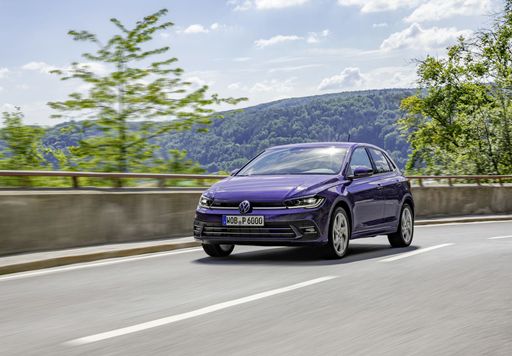 @ Volkswagen AG / VW Media
@ Volkswagen AG / VW Media
VW Polo
Fiat 600
The Fiat 600 is small, cheeky and utterly charming, a pocket-sized Italian that packs more personality than its size suggests. Ideal for city buyers who want fuss-free motoring with a playful driving character, it puts smiles ahead of spreadsheets.
details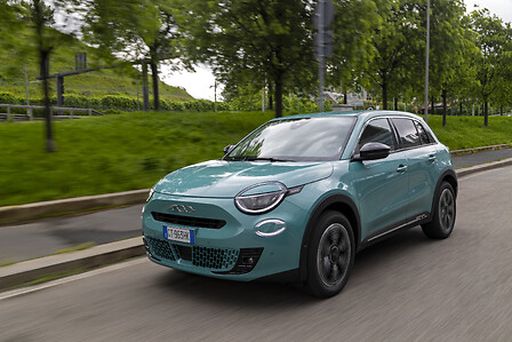 @ Fiat / Stellantis Media
@ Fiat / Stellantis Media
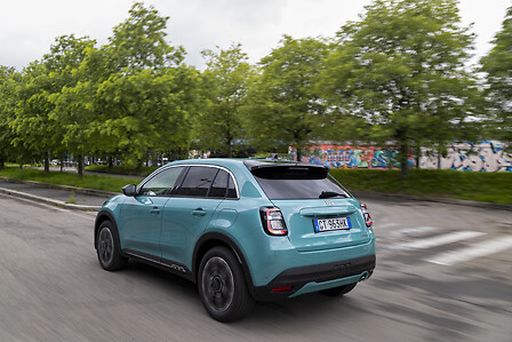 @ Fiat / Stellantis Media
@ Fiat / Stellantis Media
VW Polo
The Polo is a small car with surprisingly grown-up refinement, delivering comfortable packaging, crisp handling and a build quality that punches above its class. For buyers who want a practical, fuss-free hatch that still feels a little premium, it’s a sensible, slightly cheeky choice you’ll enjoy every day.
details @ Volkswagen AG / VW Media
@ Volkswagen AG / VW Media
 @ Volkswagen AG / VW Media
@ Volkswagen AG / VW Media
 @ Volkswagen AG / VW Media
@ Volkswagen AG / VW Media
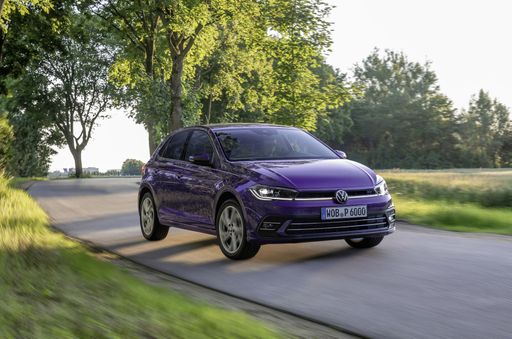 @ Volkswagen AG / VW Media
@ Volkswagen AG / VW Media
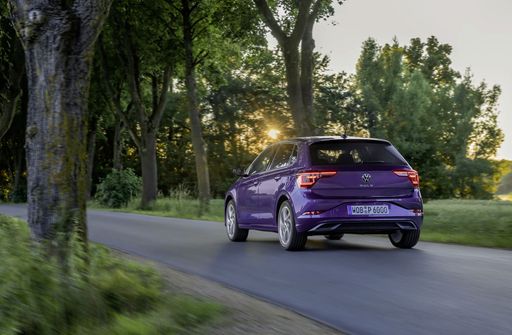 @ Volkswagen AG / VW Media
@ Volkswagen AG / VW Media
 @ Volkswagen AG / VW Media
@ Volkswagen AG / VW Media
 @ Fiat / Stellantis Media
@ Fiat / Stellantis Media
|
 @ Volkswagen AG / VW Media
@ Volkswagen AG / VW Media
|
|
|
|
Costs and Consumption |
|
|---|---|
|
Price
21800 - 31300 £
|
Price
17000 - 30400 £
|
|
Consumption L/100km
4.80 L
|
Consumption L/100km
5.1 - 6.5 L
|
|
Consumption kWh/100km
15.10 kWh
|
Consumption kWh/100km
-
|
|
Electric Range
409 km
|
Electric Range
-
|
|
Battery Capacity
51 - 52 kWh
|
Battery Capacity
-
|
|
co2
0 - 109 g/km
|
co2
116 - 148 g/km
|
|
Fuel tank capacity
44 L
|
Fuel tank capacity
40 L
|
Dimensions and Body |
|
|---|---|
|
Body Type
SUV
|
Body Type
Hatchback
|
|
Seats
5
|
Seats
5
|
|
Doors
5
|
Doors
5
|
|
Curb weight
1355 - 1595 kg
|
Curb weight
1143 - 1378 kg
|
|
Trunk capacity
360 - 385 L
|
Trunk capacity
351 L
|
|
Length
4178 mm
|
Length
4074 mm
|
|
Width
1779 mm
|
Width
1751 mm
|
|
Height
1523 - 1525 mm
|
Height
1431 - 1451 mm
|
|
Max trunk capacity
1231 - 1256 L
|
Max trunk capacity
1125 L
|
|
Payload
427 - 430 kg
|
Payload
432 - 457 kg
|
Engine and Performance |
|
|---|---|
|
Engine Type
Electric, Petrol MHEV
|
Engine Type
Petrol
|
|
Transmission
Automatic
|
Transmission
Manuel, Automatic
|
|
Transmission Detail
Reduction Gearbox, Dual-Clutch Automatic
|
Transmission Detail
Manual Gearbox, Dual-Clutch Automatic
|
|
Drive Type
Front-Wheel Drive
|
Drive Type
Front-Wheel Drive
|
|
Power HP
110 - 156 HP
|
Power HP
80 - 207 HP
|
|
Acceleration 0-100km/h
8.5 - 10.5 s
|
Acceleration 0-100km/h
6.5 - 15.6 s
|
|
Max Speed
150 - 200 km/h
|
Max Speed
171 - 240 km/h
|
|
Torque
205 - 260 Nm
|
Torque
93 - 320 Nm
|
|
Number of Cylinders
3
|
Number of Cylinders
3 - 4
|
|
Power kW
81 - 115 kW
|
Power kW
59 - 152 kW
|
|
Engine capacity
1199 cm3
|
Engine capacity
999 - 1984 cm3
|
General |
|
|---|---|
|
Model Year
2023 - 2025
|
Model Year
2024 - 2025
|
|
CO2 Efficiency Class
A, C
|
CO2 Efficiency Class
D, E
|
|
Brand
Fiat
|
Brand
VW
|
What drive types are available for the Fiat 600?
The Fiat 600 is available as Front-Wheel Drive.
The prices and data displayed are estimates based on German list prices and may vary by country. This information is not legally binding.
